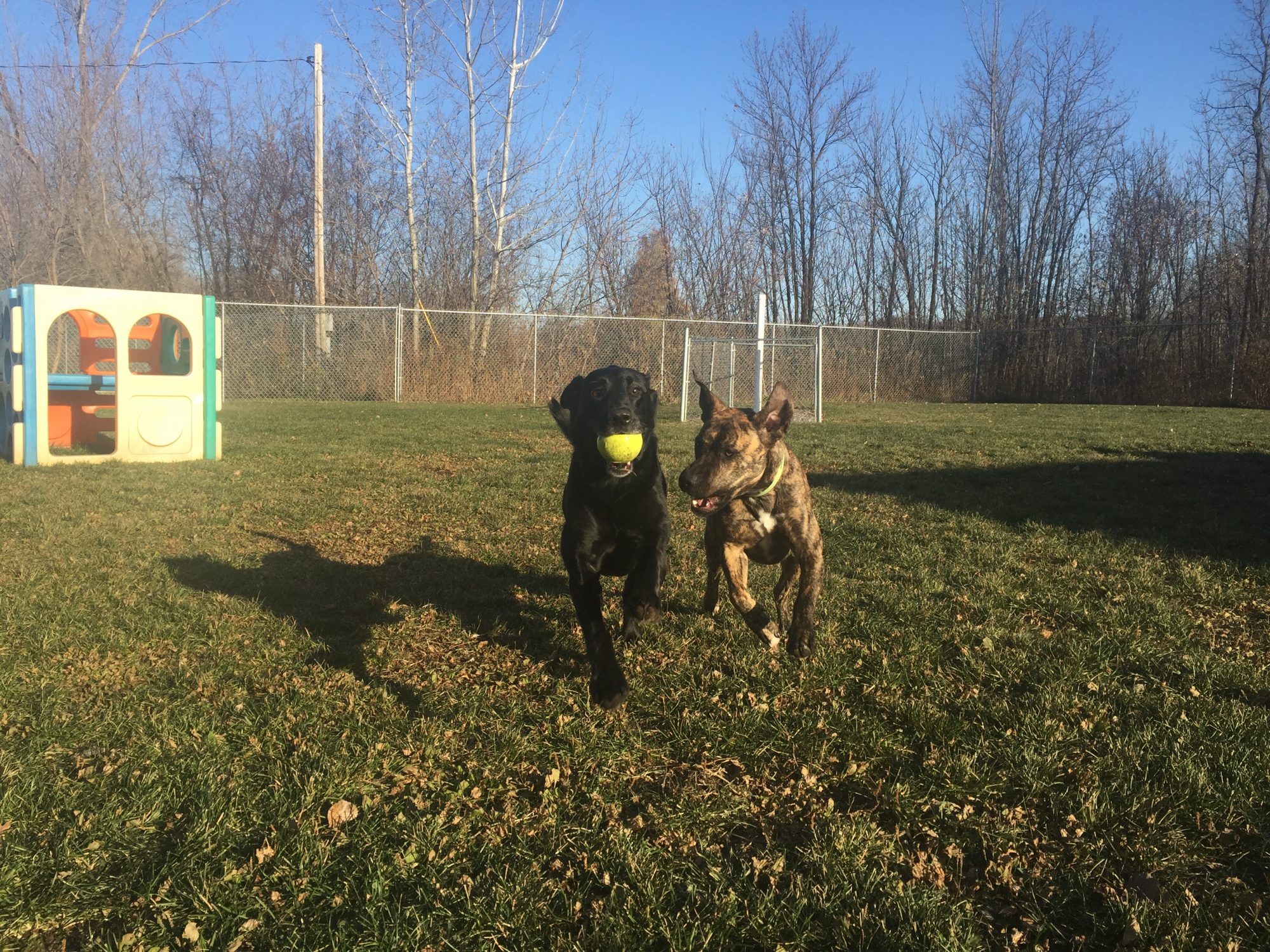What is Your Dog Trying to Say?

By Lena Hansen ZimmVet Pet Hotel and Daycare Assistant Manager
Dog Body Language Basics
Dogs use body language to communicate their emotional state to others. It is important to understand how they communicate and what they are trying to tell us. Though they have many different signals, here are a few body language basics to help you better understand your pooch and be able to respond accordingly:
Yawning
Most believe that yawning is a simple gesture that goes along with being tired, but for dogs this isn’t necessarily true. Dogs yawn a lot, and the meaning differs based on their current situation. Most of time, if your dog is in an uncomfortable or stressful situation, they will yawn to alleviate frustration. Sometimes your dog will yawn in anticipation. Whether they are yawning to control their stress levels or to control their excitement, yawning is mostly used as a calming signal.
Whale Eye
When your dog is in a stressful situation, he may turn his head to the side and fixate on something out of the corner of his eyes. The whites of his eyes are visible and form a half-moon shape, indicating that he is uncomfortable and possibly fearful. A dog may display whale eyes if a stranger is approaching too quickly, an unknown sound is heard, or he is being handled where he feels uncomfortable (such as a nail trim). Slow or change your approach if you notice this stress signal.
Tail Position
A dog’s tail is a huge indicator of their emotional state. The lower the tail, the more fear, stress, or anxiety your dog is feeling. The higher the tail, the more interested and confident your dog is. A happy, content dog carries their tail in a natural position, which varies based on breed.
Piloerection
When the hair on your dog’s back stands up, the scientific term is called Piloerection. It is an involuntary reaction that shows your dog is excited or aroused. It is easy to confuse a dog’s hackles being raised with aggression, but this isn’t always the case. If you see that your dog is displaying piloerection, look for other body language signals to understand their emotional state in the current situation. It’s not uncommon to see this happen during exciting play, in a younger dog who is unsure of their environment, or in a nervous or surprised dog during a first-time greeting with another dog. If you notice piloerection in your dog, it is never a bad idea to slow down the situation and give your dog time to relax.


